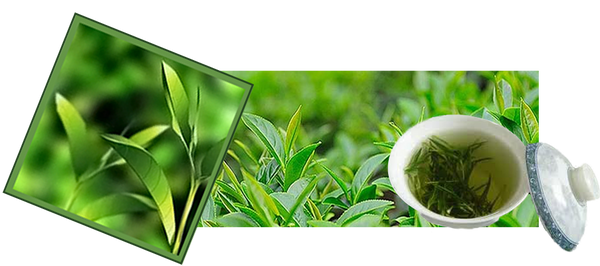Our Teas

Tea—the most popular beverage in the world—is an evergreen plant (Camellia sinensis) that grows in tropical and subtropical climates with at least 50 inches of rain per year. It can grow at elevations as high as 9,000 feet above sea level. Only the top 1-2 inches of a mature plant are plucked (the top two leaves and an unopened bud.) These buds and leaves are called “flushes” A plant will grow a new flush every seven to ten days during the growing season. The vast majority of teas are plucked entirely by hand. There are more than 10,000 varieties of tea today most of which are come from two principal varietals, the small-leaf China plant (Camellia sinensis sinensis) and the large-leaf Assam plant (Camellia sinensis assamica.) They are generally grouped according to the method of processing. The leaves of Camellia sinensis will begin to wilt and oxidize soon after plucking. This enzymatic oxidation is referred to as "fermentation" in the tea industry, although it is not a true fermentation inasmuch as it is not caused by micro-organisms and is not an anaerobic process. Rather the oxidation of the tea leaf is the same as that of an apple when it is cut and exposed to the air. It is the amount of oxidation and the process used to control it that distinguishes one type of tea from another. Green and white teas are the least processed and, consequently have little to no oxidation. Black tea is fully oxidized. Oolong is oxidized between 30% to 70%, depending upon the goal of the tea master. The oxidation process is halted by a brief firing or steaming of the leaves. Much care must be taken to control moisture and temperature throughout the manufacturing process and thereafter or fungi will grow on the tea. This form of fungus causes real fermentation that would contaminate the tea with toxic substances and would render the tea unfit for consumption.
Tea is very high in antioxidants and has been proven to aid in the prevention of cancer, heart disease and osteoporosis. It is also purported to be an effective aid in weight loss, inasmuch as it suppresses the appetite as well as the increase of glucose and insulin in the body. Since insulin is our most pro-aging hormone, tea’s suppression of insulin also has an anti-aging effect on the body. Although pound for pound tea has more caffeine than coffee, once brewed it has 50% less. For more information about the many health benefits of tea, please refer to our tea master's article the subject.